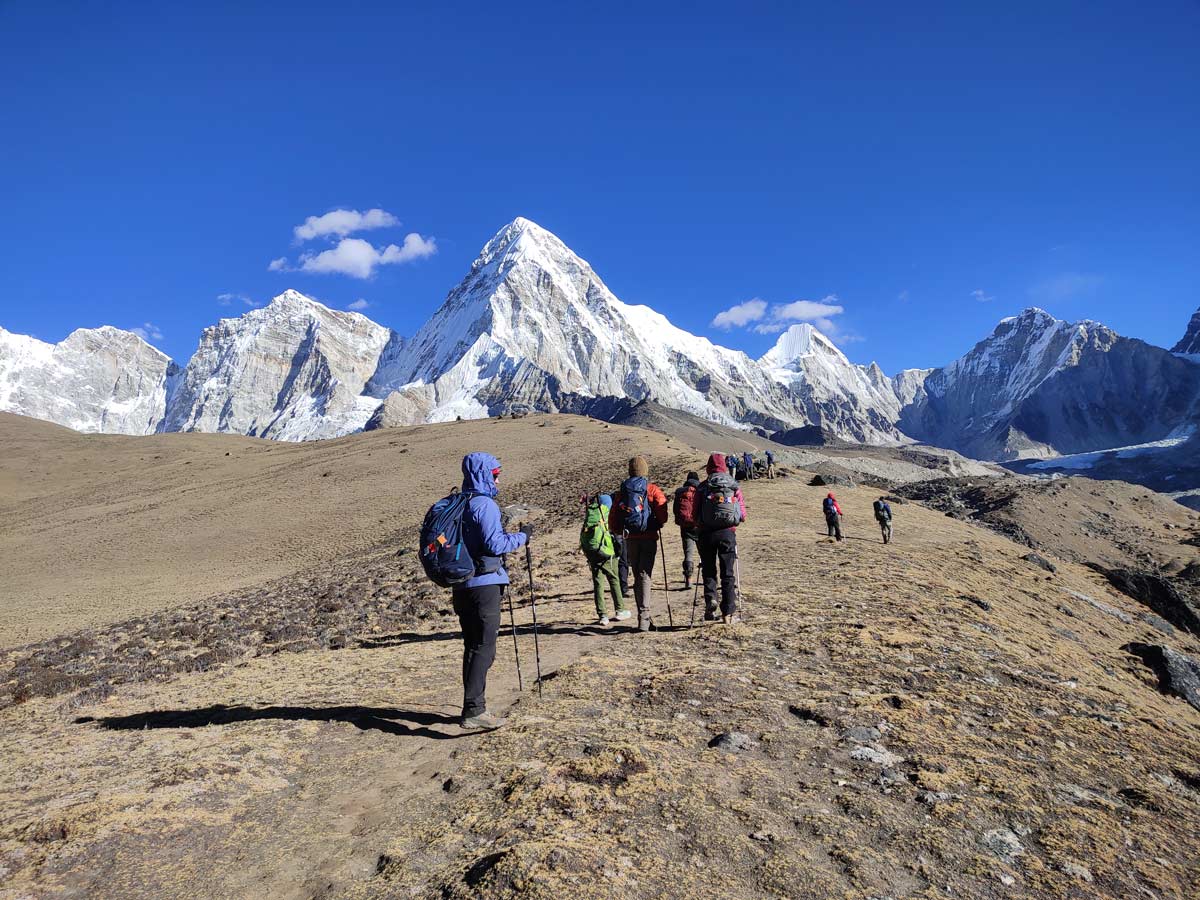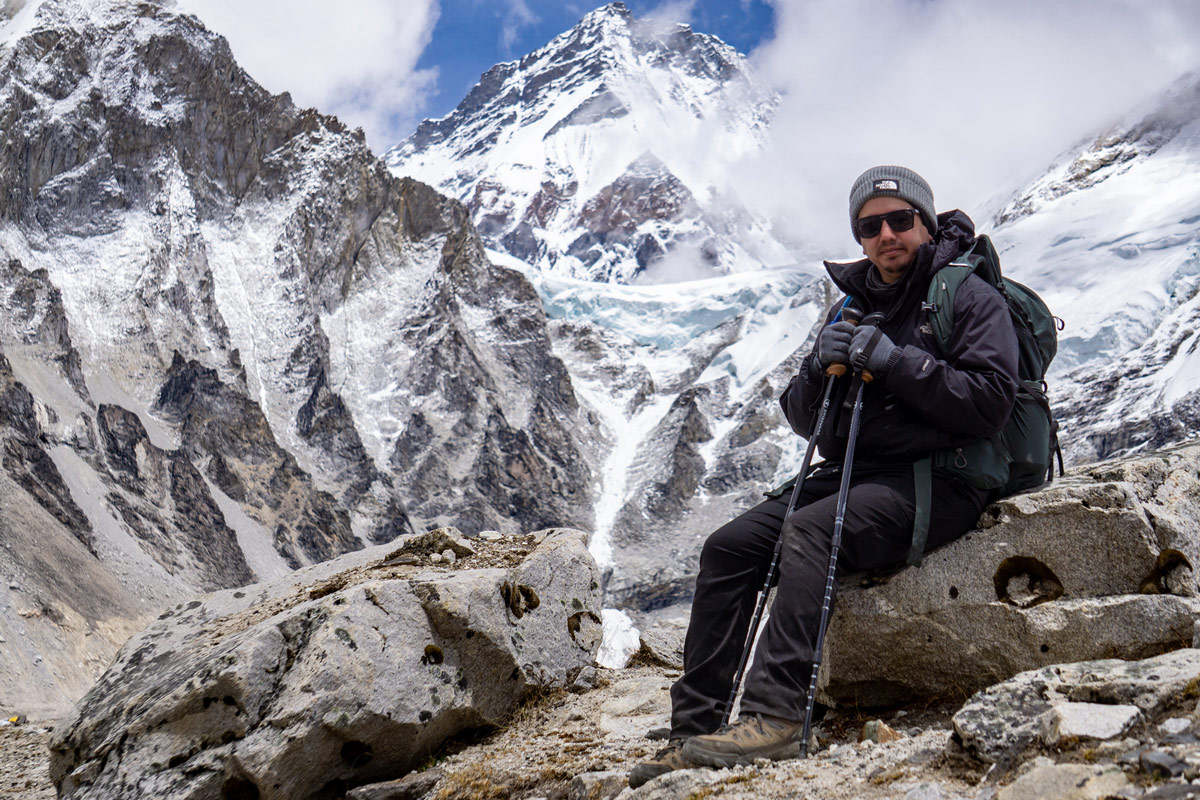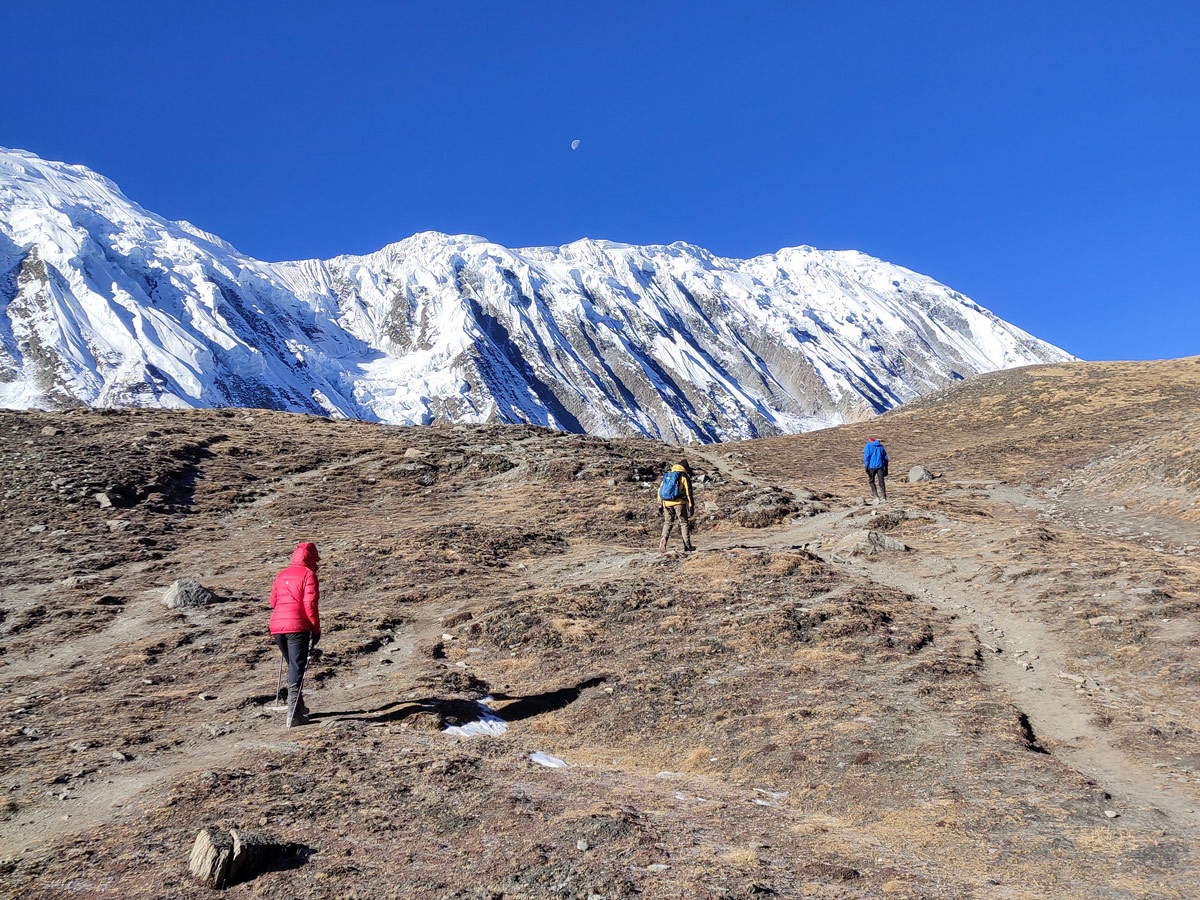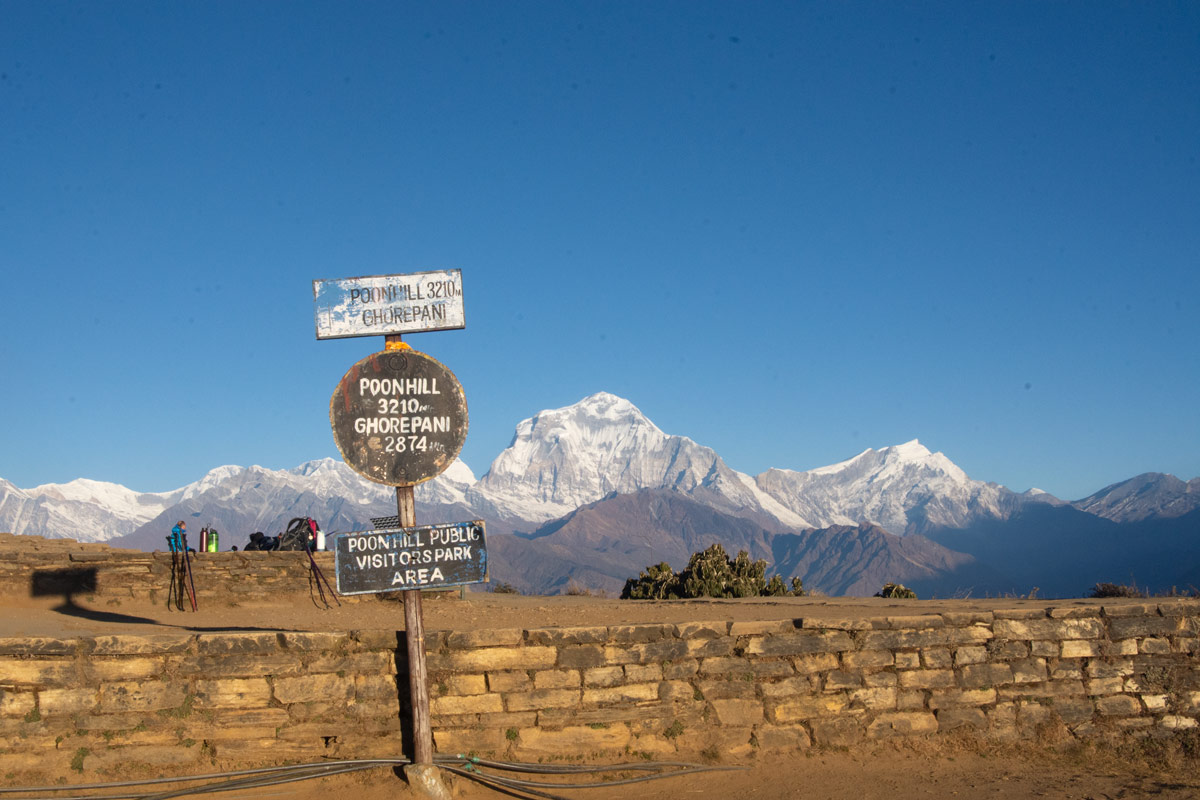The Everest Base Camp Trek is one of the most coveted destinations for adventurers and trek enthusiasts.
The camp towering at an impressive 5,364m is a seamless blend of natural and cultural immersions.
As base to the world’s tallest mountain Mount Everest (8,848.86m), the Everest Base Camp trek is a journey through a trail of remarkable destinations.
Beginning in Lukla (2,860m) and ranging Namche Bazar (3,440m), Tengboche (3,867m), Dingboche (4,410m), and Gorakshep (5,164m), EBC is a dream both exhilarating, and tranquil; a complete package.
Importance of safety on trek
Safety is a fundamental aspect of the trekking experience, intricately linked to and influenced by its challenges.
The Everest Base Camp trek is high in altitude and remote in terms of locality, to ensure a smooth and satisfactory trip security is vital.
Major or minor accidents and various unnecessary circumstances can be avoided if safety is kept on trek.
Quoting statistics, the Everest Base Camp trek welcomes more than 50,000 trekkers per year, and among them more than 90 percent make it to the base camp.
The provided data poses evidence prodding the essentiality of safety and awareness to ensure a resolute experience.
Risks associated with trekking to Everest Base Camp
The Everest Base Camp trek is an unparalleled experience, but it comes with its share of risks.
While some challenges do contribute to the prominence of the trek, staying well informed and vigilant can help you easily run through these hurdles.
The following are various risks associated with trekking to the Everest Base Camp:
Altitude sickness
The EBC trek poses a challenge to trekkers as they tackle altitudes significantly different from what they encounter below.
As you ascend higher into the camp, your inability to adapt to the sudden change in altitude and air pressure could induce several symptoms of illness.
If you experience headache, nausea and vomiting, loss of appetite, fatigue, dizziness or a combination of these symptoms, this could be a sign of altitude sickness.
Additionally, alcohol consumption, inadequate sleep and dehydration can also trigger the condition.
Rapid Ascent
The anticipation of exploring the renowned trail of the Everest Base Camp can be enthralling yet sometimes lead to less-than-ideal circumstances.
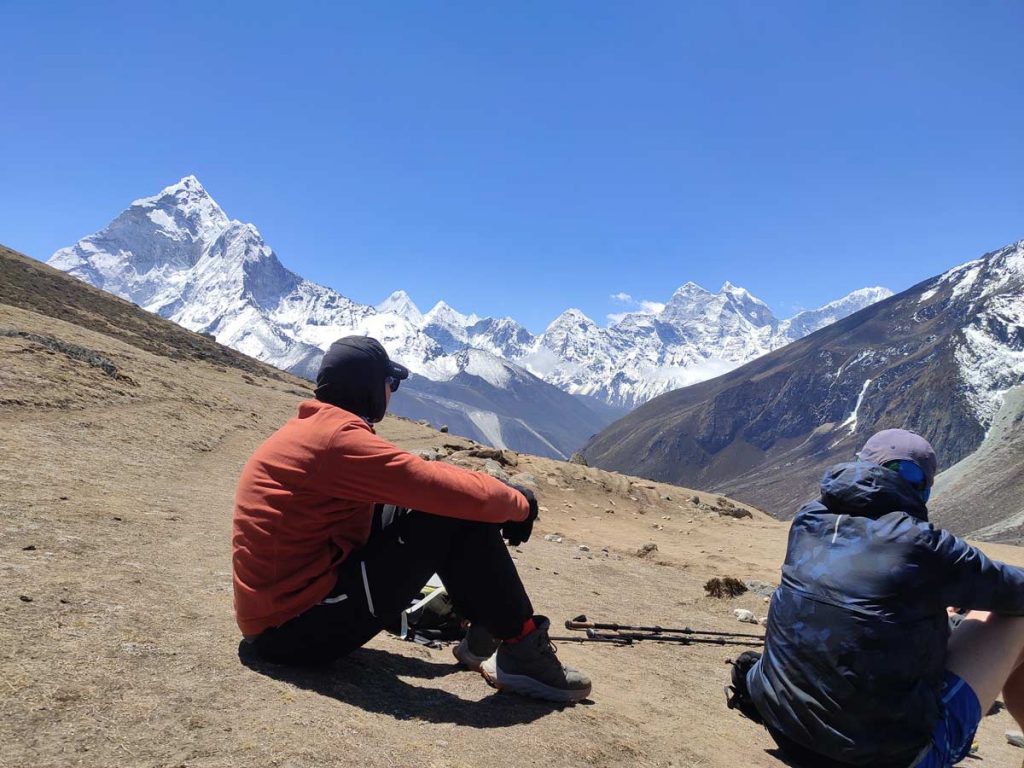
The eagerness to reach the summit may prompt the need for a speedy ascent, resulting in challenges when adjusting to the changing environment, the altitude and diet.
Rushed ascensions make it hard for trekkers to navigate and rest through the trail, it could harm them both mentally and physically.
Limited Oxygen
With the gradually increasing altitude through the trail and the impressive elevation atop, the oxygen levels too keep dropping.
As you hike up, the air pressure decreases, also decreasing the pressure of oxygen.
This lack of oxygen can pose several threats to the human body that is not quite used to the sudden drops.
You could have difficulty breathing and staying persistent on track, altitude sickness is also another threat.
Overexertion
The EBC trek is demanding as much as it is exciting and rewarding. It involves long walks through steep and unfamiliar terrains for days with no end.
Trekkers will need to constantly be on their toes and this process of continuous movement can be stressful for the body.
Fatigue and muscle pain can make it tough to keep going, increasing the chances of sickness and minor accidents.
Extreme Weather
Weather conditions can often be unpredictable during the Everest Base Camp trek.
Different seasons welcome different weather patterns, adding a constant element of uncertainty throughout.
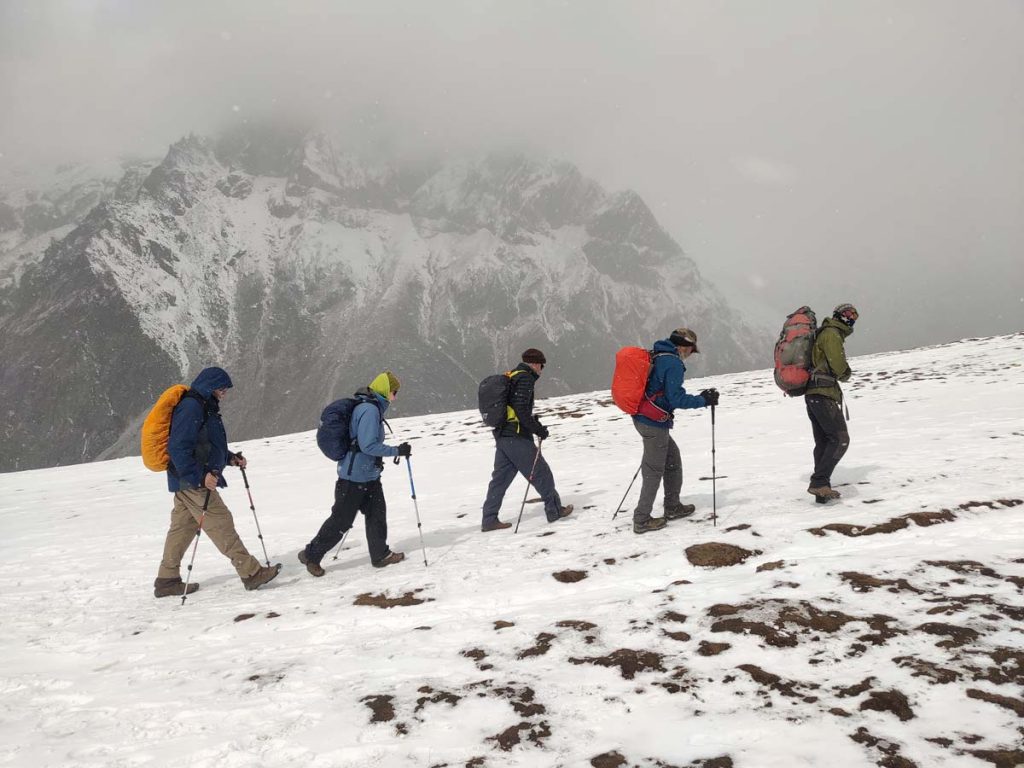
The Everest region experiences extremely cold temperatures, and the weather changes rapidly, making it quite difficult for trekkers to get used to.
Dehydration
Dehydration is another primary risk associated with treks.
Traveling to high altitudes with low air pressure and limited oxygen requires trekkers to seriously maintain their overall health, for which hydration is crucial.
Without enough water in their bodies, trekkers can be fatigued and fall ill.
Lack of Medical facilities
The Himalayan region of Nepal is remote thus considerably away from the reach of advanced medical assistance.
Given the physical risks associated with trekking, the lack of proper healthcare is an obvious threat to the community.
Unstable Communication
Communication at the Everest Base Camp is possible, but it cannot be totally relied on. Not being able to stay in constant touch can be risky.
Through the trail you will find Wi-Fi and phone services but at the camp there is no Wi-Fi available, phone networks too are unstable.
Transportation
Considering the remoteness of the destination, there could be a few difficulties with the transport system.
There could be sudden delays and cancellations with flights to and from Lukla which can directly affect the trekkers’ itinerary.
Sun Burn and UV radiation
At higher altitudes the sun’s intensity is stronger, and with the chances of sunburn also heightened, there is a major risk of skin damage.
The atmosphere grows thinner with the increase in elevation. Trekking on snow can cause UV radiation to reflect which is significantly harmful for the skin.
Environmental Hazards
Various Environmental factors pose risk to trekkers when trekking to the Everest Base Camp.
EBC trekking involves walking through challenging terrains whilst the weather is unpredictable and often hindering.
Trekkers can sometimes encounter snowstorms, high winds and extremely cold temperatures.
Isolation
Everest Base Camp in the Khumbu region, located near the foot of Mount Everest, is geographically isolated.
Although the opportunity to turn off and catch a good breath within the mountains is undeniably appealing, this also limits communication and reach, which isn’t always advantageous.
There can also be cases where trekkers get lost and have a difficult time finding their way out.
How to minimize the risk during EBC trek?
Risks are inherently associated with any trek experience, same goes for the Everest Base Camp Trek.
However, several of these risks can be easily tackled through precaution and awareness.
The following are various ways to mitigate risks during the EBC trek:
Acclimatize properly
Acclimatization is key to reducing the risk of altitude sickness and various other adjustment issues that come with trekking to high altitude locations such as the Everest Base Camp.
Acclimatization helps your body adjust to the environment, temperature and air pressure of the area you are trekking to.
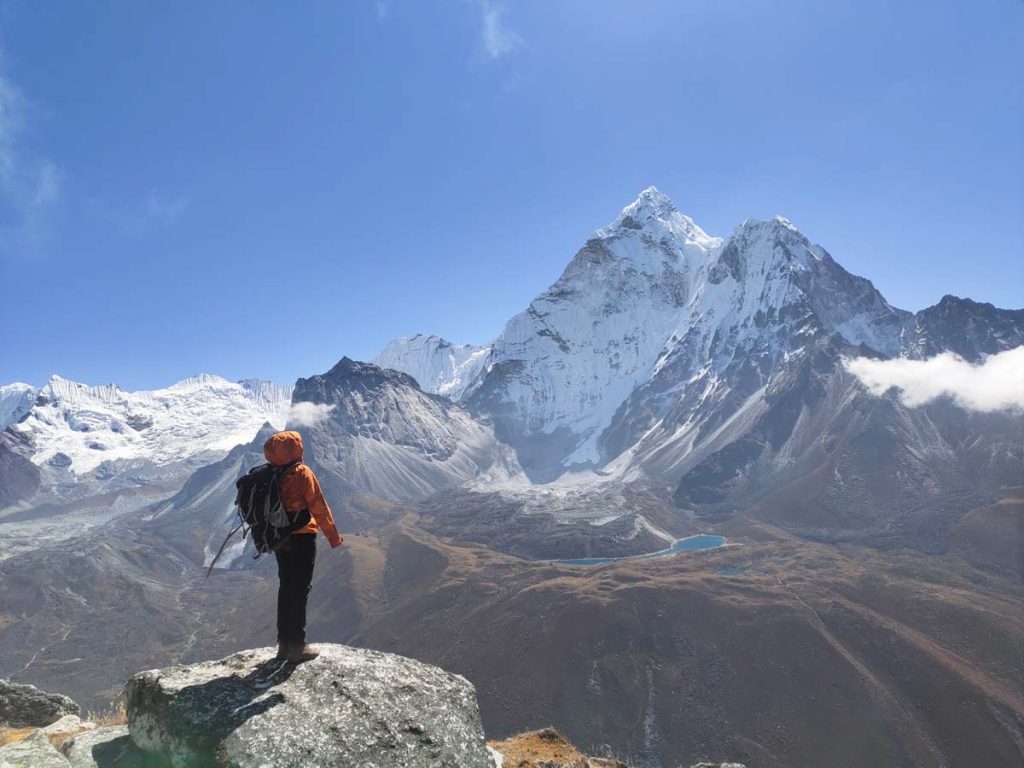
Ace the Himalaya both prioritizes and understands the essentiality of acclimatization for the trekkers.
The company has specially excluded days for acclimatization in their itinerary with experienced guides to assist you at all times.
Altitude medication
One of the most effective ways to fight altitude sickness is by taking medication prescribed to help trekkers treat and prevent the effects of altitude.
Acetazolamide is a medication commonly used to prevent altitude sickness. It helps stimulate ventilation getting you adjusted to higher altitudes at a faster pace.
It is recommended to start taking acetazolamide a day before ascent and continue with a dosage of approximately 125mg every 12 hours at higher elevations.
As the ascent persists the duration of dose can also be extended.
However, the side effects of the drug are to be watched for.
Allergic reactions like rashes and hives, fever, trouble breathing, fatigue, redness, blistering or loosening of the skin, should be immediately consulted.
Individuals with kidney, liver or lung diseases as well as women who are pregnant or breast feeding should inform professionals of their conditions before taking the medicine.
Physical preparation
Prior to commencing on your trek, training your body for EBC trek the strain will help prevent any physical discomfort down the line.
Incorporating exercises that help build stamina and endurance can be great for adjusting and avoiding accidents later.
Pack smart
Efficient and smart packing is key for a successful trek. Remember to pack light and prioritize the essentials.
Carrying a heavy backpack can get you tired easily and make it difficult for you to tackle the terrains.
Investing in high-quality and reliable trekking gear is always advantageous.
Make sure to carry sturdy and comfortable trekking boots, warm clothes and a quality sleeping bag.
Know your limits
The Everest Base Camp trek, like several other treks, is physically demanding. It is essential to take optimum rest and ascend gradually.
Having a good understanding of your ability helps mitigate the risk of accidents.
Recognizing your limits enables you to pace wisely which helps avoid fatigue, and the risks of altitude sickness.
Choose the right season
Selecting the right season for your trek is crucial, most of your experience hinges on this very choice.
Given the high altitude and remote nature of the Everest Base Camp, the weather conditions there are unreliable and can put your trek at risk if travelled to at an inopportune time.
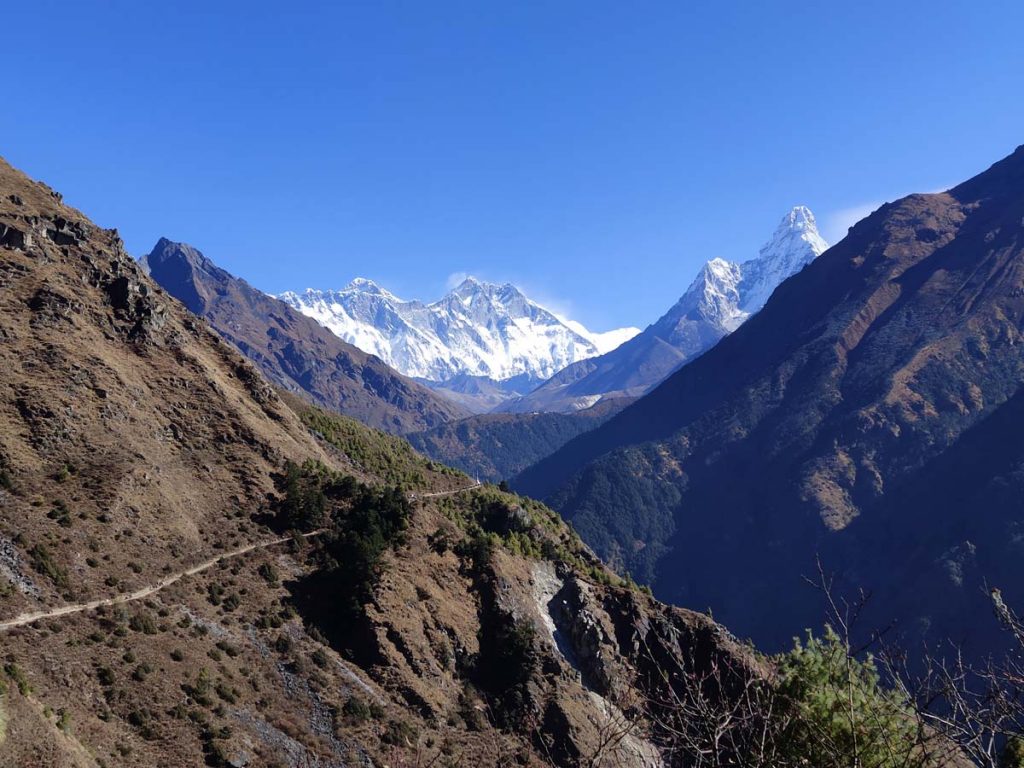
Spring and Autumn are the most recommended seasons for EBC trek. During this period the temperature is mild, the skies clear and landscapes lush and vibrant.
Opting for the right season minimizes difficulties and maximizes your chances for a quality trip.
Carry first-aid-kit
Carrying with you a personal first aid kit, especially prescribed medications, is essential for a safe trek.
With Ace the Himalaya, you can rely on guides who are trained in first aid and consistently carry well-equipped kits, ensuring prompt care whenever needed.
Being able to quickly treat minor to major injuries will help avoid further complications and infections if any follow.
Stay hydrated and eat well
The Everest Base Camp trek is a demanding journey, prioritizing one’s health and fitness throughout is crucial.
Nutritious Nepali meals available at rest stops along the trail will help you sustain energy and stay committed.
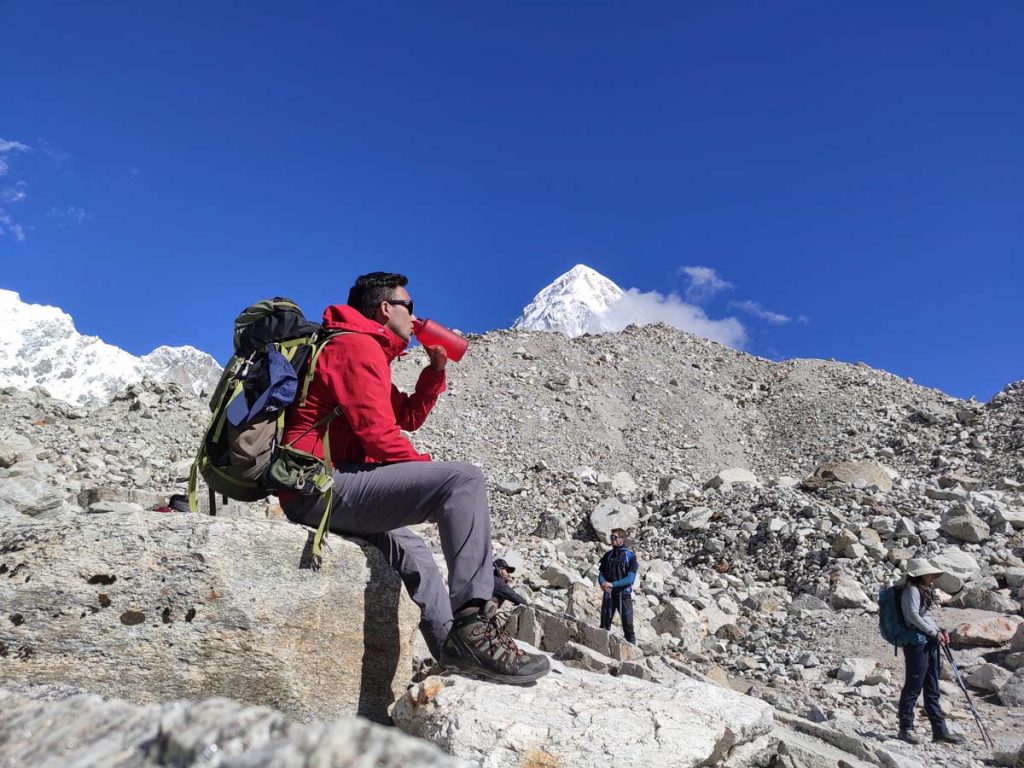
Hydration is equally significant to avoid dehydration and reduce the risk of altitude sickness.
Trekkers should make sure to take their meals diligently and drink loads of water.
Stay informed
Maintaining vigilance and staying as connected as possible are key principles to uphold both before and during the trek.
A comprehensive understanding of the trail, weather conditions, healthcare, the people, their diet and facilitation can help trekkers plan for their trips accordingly.
To actively avoid risks having a lot of information at hand is advantageous, it will help take preventive measures and ensure a smooth trek.
Travel with a reputed company
Selecting a reputable company is essential for a worthwhile trekking experience.
Be mindful and choose your travel partner wisely by conducting thorough research and taking feedback from others especially seriously.
A respected company is likely to provide better guides that prioritize your safety and provide you with a fulfilling experience.
Is the Everest Base Camp Trek dangerous?
EBC trek is a trail of adventure, its enthralling charm is what makes it especially desirable, to call it dangerous would be insubstantial.
The trekking route to Everest Base Camp is well-maintained and helps trekkers keep a gradual pace.
The trek welcomes all enthusiasts regardless of experience. It is an opportunity open to all, a dream waiting to be fulfilled.
Trekkers will be able to rest at safe and accommodating destinations with tea houses and lodges readily available throughout.
Health facilities too are conveniently available, with hospitals in Namche Bazaar and Periche and medical centers established at Gorakshep and Dingboche.
The trek is free from the risks of landslides, avalanche and flood, abundant acclimatization trails also alleviate concerns of altitude sickness, promising a peaceful journey amidst the sacred Himalayas without threat.
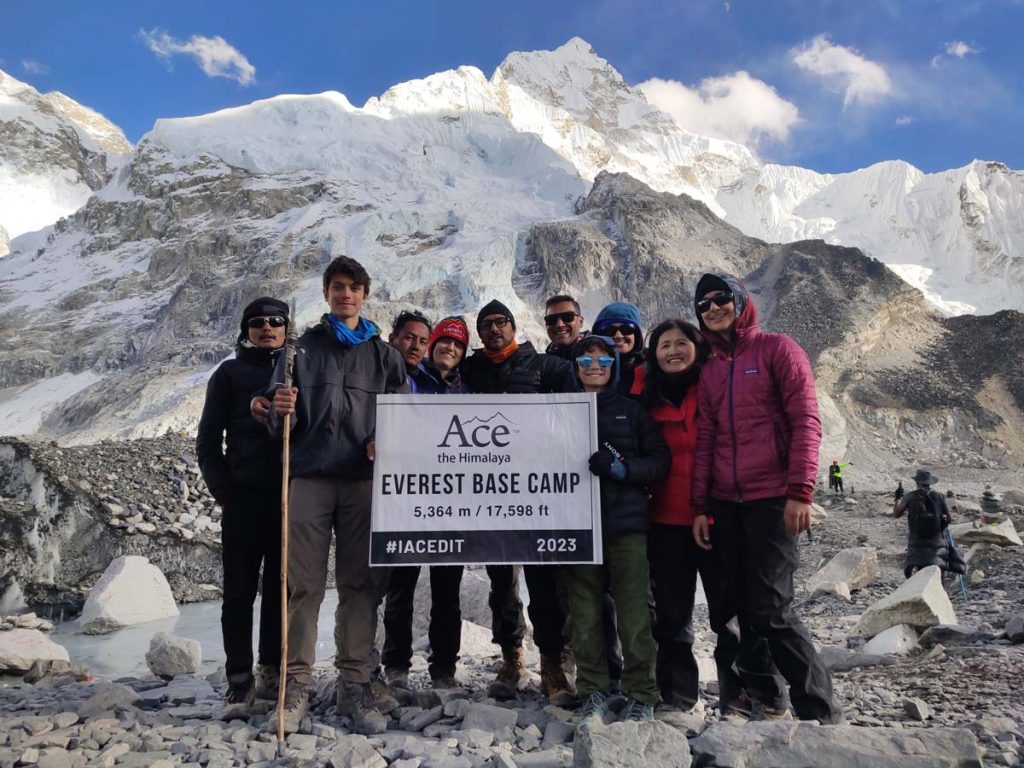
Embarking on the Everest Base Camp Trek is a dream for many adventure seekers, but the concern of safety often looms large.
While the journey presents its own set of challenges, the thrills that accompany the trek experience are far from what you can deem dangerous.
The mesmerizing landscapes, unique cultural encounters, and the active yet fulfilling run through its tranquil trail makes EBC the experience of a lifetime.
If certain liberties are well kept and prevention practices are covered on end, going through with the trek will not be intimidating at all.
Ultimately, to those willing to embrace its sensations, with proper planning and determination the Everest Base Camp trek can easily be a safe and rewarding expedition.
